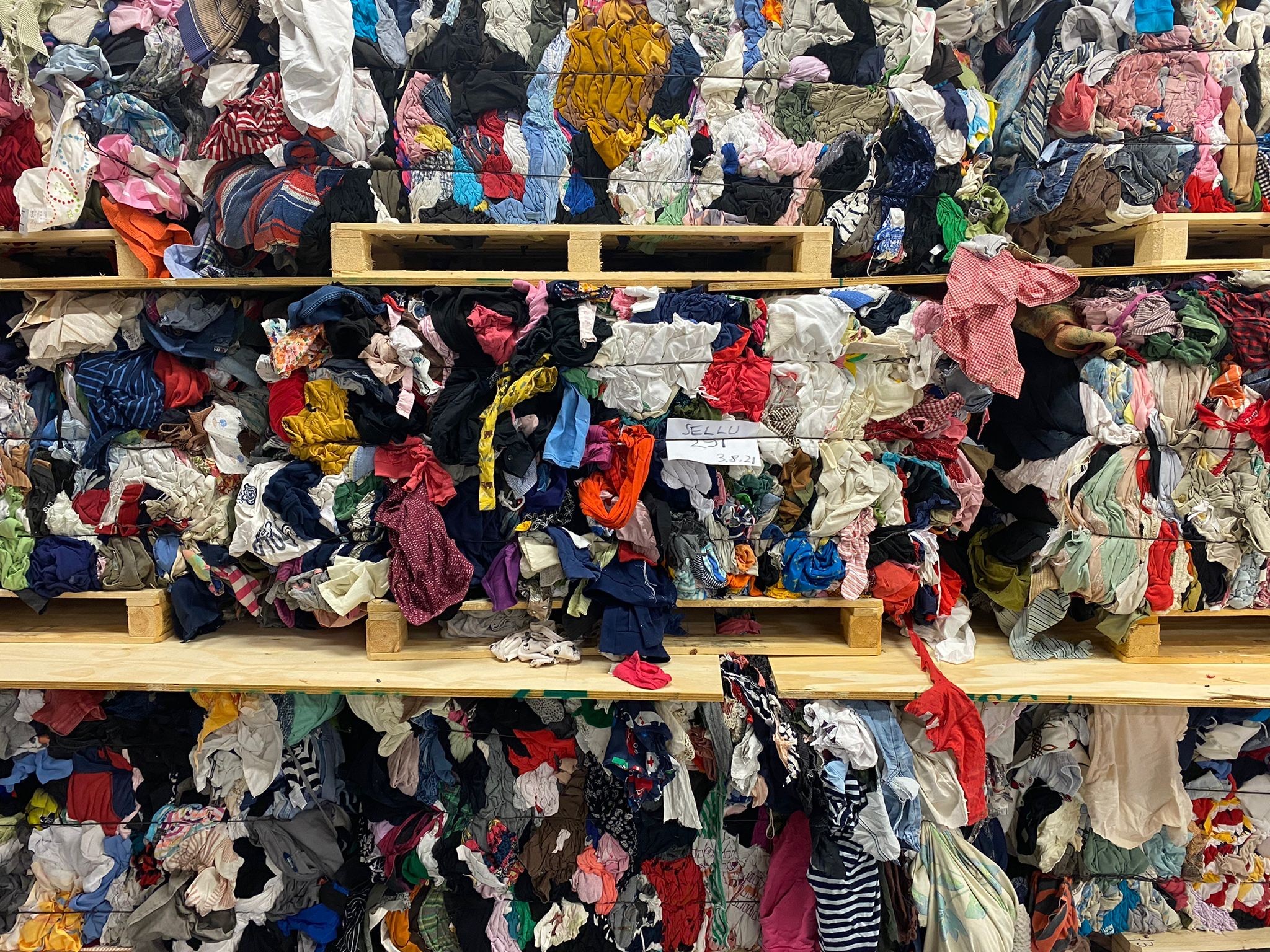Author: Kirsi Niinimäki Picture: Sini Suomalainen
The fast fashion industry needs to construct a new sustainable paradigm to mitigate persistent environmental degradation. By understanding how fashion businesses function and individuals consume fashion, policy actions and academic research can make fundamental changes to the system.
The fashion system needs a new paradigm. While fast fashion has achieved international success from a business perspective, the industry’s supply chain and consumption has exacerbated global environmental damage that exploits water, chemicals, and energy. Despite this human-induced environmental change, the fashion system still leans on its model of continuous growth. In order to mitigate their environmental impacts, fast fashion businesses must make system-level changes in production and policies to embrace resource sustainability.
The Success of Fast Fashion’s Business Model
The fashion industry has found a successful business model by situating mass manufacturing in low-cost countries. This strategy offsets the costs of the complex saturated logistic chains (manufacturing steps in different locations) and global supply chains involved in clothing production. Fast fashion global supply chains start with fiber production (from agricultural or petrochemical sources), move through yarn production, textile production and garment assembly, and finally end at retail locations around the world. Throughout this process, different countries undertake only one or two particular steps, creating complex logistical networks.[i] To offset these costs manufacturers try to complete manufacturing cheaply in the global South and transported finished goods to the global North to allow Western consumers easy access to cheap fashion items.
In addition to low-cost manufacturing, fast fashion relies on ever-changing trends and the “allure of fashion” to drive supply. The industry preys on the desire and emotional need to constantly change one’s appearance and stay “up to date.” As a result, fulfilling this need requires impulse buying and temporarily using garments, which are then disposed of to make way for new purchases. Together, fast fashion’s low labor cost, inexpensive clothes, and effective marketing create a repeating cycle of production and waste.
As a system and model, fast fashion’s influence has boomed. Starting at the end of the 1990s, the fast fashion model has led to many fashion brands producing almost twice the number of clothing collections from twenty years ago. Clothing purchases in Europe increased by 40% during 1996–2012, even as overall garment usage time has dropped by 36% since 2005. Today, analysts estimate fast fashion will continue to grow by 2% every year.[ii]
Fast Fashion’s Detrimental Effects on the Environment
While financially successful, fast fashion remains environmentally unsustainable. For instance, cotton cultivation and the wet processes of the textile industry such as bleaching, dyeing, printing, and finishing all require large amounts of water. These treatment processes also require enormous amounts of chemicals, many of which are toxic and cause health risks for factory workers and environmental risks when wastewater is improperly purified.[iii] Harmful chemicals can end up in groundwater, contaminating drinking water for local human and wildlife populations. Furthermore, toxic chemicals used in textile production have a global impact through gradual bioaccumulation because these toxins build up in organisms and ecosystems. For example, stable fluoropolymers, which are used to make textiles waterproof, have been found in multiple polar bears in Arctic locations. With regard to energy, the textile industry heavily relies on non-renewable sources and produces 8–10% of global CO2 emissions (4-5 billion tons annually). Recent increases in online shopping and demand for shorter delivery times have worsened CO2 emissions as the air cargo system supporting such rapid shipping has a substantially larger environmental impact than slower transportation like container boats. Carbon emissions in logistics can increase by 35% even if only 1% of garment transportation changes from ship to air cargo.
Fast fashion’s business model further intensifies the negative effects on the environment. The short length of use and rapid turnover of fast fashion items highlights the low quality and disposability of clothes produced with this model. Streams of textile waste are currently increasing not only in the Global North but in all countries. Additionally, the mass manufacturing system facilitates inaccurate production and oversaturation, leading to many garments remaining unsold and burned by brands. It is estimated that 20-30% of produced garments are never actually used (including unsold and low-quality garments). This unsustainable and flagrant misuse of resources calls for immediate action to mitigate fast fashion’s environmental effects.
Slowing Down the Fashion System
The extensive environmental impacts of fast fashion at the local and global level require system-level changes. Reform should focus on fundamental changes to fiber and textile production, logistics and chemical management, and business and consumer practices. For instance, the textile industry must decrease its use of non-renewable energy and level of CO2 emissions. Separately, manufacturers should decrease chemical usage during textile processing, and policy makers must update wastewater treatment requirements. Finally, overall production volumes and the rate at which material passes through the systems must slow down. In effect, companies must produce less material more efficiently, and customers must consume less and wear garments longer. To achieve these goals, an Extended Producer Responsibility (EPR) policy should be enforced. Producers would be required to take back all their products at the end of their lifespans and be responsible for recycling the material. This added responsibility would incentivize producers to create more durable and high-quality products.
On a broader level, slowing down the system requires businesses to transform extended usage time into a financial advantage. Profits would have to come from sources beyond one-time sales. Fashion business services such as repairing, redesigning, renting, or second-hand selling already interest brands and many are trying out these activities after the COVID-19 crisis. Furthermore, policies making waste a cost for the industry (e.g. EPR) could redirect development towards improving garments’ lifespan and quality. In this new system, businesses would work at a slower pace and more accurately, invest in better quality, raise product prices, and find more creative marketing methods. Additionally, the latest developments in recycling technologies can provide better ways to close the material loop by recycling textile waste back into high quality fiber production (e.g. Infinited Fibre Company’s cellulose regeneration). Creating a quality guarantee can also direct consumer choices towards investing in better, premium-quality, and long-lasting garments. Currently, consumers claim they are unable to find quality garments and therefore are not ready to invest more in them. A new quality system could persuade them to trust fashion companies in a new way. For instance, some brands already offer a one-year guarantee for their garments with repair services. This builds trust between the company and its clients and provides a reason for a higher product price.
As a whole, system-level transformation requires wide-ranging collaboration and research among the industry, businesses and consumers. One example of this is the ongoing FINIX project which aims to sustainably transform the Finnish textile system. By conducting experiments and collaborating between the industry and businesses on textile waste recycling, digital innovation, design strategies, extended usage time and ecosystem management, FINIX aims to implement solutions promptly and holistically. Many different tools are currently under development. The Shades of Green tool evaluates and communicates the sustainability aspects of the garment. Additionally, the Quality and Life Cycle Information Management tools enable transparency in the supply chain. Most importantly, however, policy actions which enhance the transformation towards sustainability, business models, methods of ecosystem building, consumers’ clothing use practices, automatic sorting of textile waste, chemical textile waste recycling processes, and other system transformations are under investigation. Academic multidisciplinary research like this which includes collaboration with companies can potentially speed up the transformation process.
Moving Forward
In the fashion system, a new system-level understanding of sustainability is grounded on slower fashion cycles. To avoid surplus production and to lower the environmental detriments of the fashion industry, participation of all stakeholders is needed in this transformational process. Businesses must create more resourceful ways to make a sustainable profit, and consumers need to demand long-lasting and eco-friendly fashion. All actors must resist the allure of fast fashion and impulse shopping and see fashion’s value through the lens of environmentalism; this means that for a globally responsible fashion: less is more.
[i] Nikolay Anguelov, The Dirty Side of the Garment Industry: Fast Fashion and Its Negative Impact on Environment and Society (CRC Press, 2015).
[ii] Kate Fletcher, Craft of Use: Post-Growth Fashion (Routledge, 2016).
[iii] Anguelov.
…
Kirsi Niinimäki is an Associate Professor of Fashion research in the Department of Design at Aalto University, Finland. Her research has focused on a holistic understanding of sustainable fashion, textile fields and connections between design, manufacturing, business models and consumption. Niinimäki’s research group, the Fashion/Textile Futures, is involved in several research projects which integrate closed loop, bio-economy and circular economy approaches in fashion and textile systems and extend the understanding of strategic sustainable design. Niinimäki’s newest book is Sustainable Fashion in a Circular Economy (2018).

